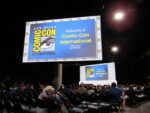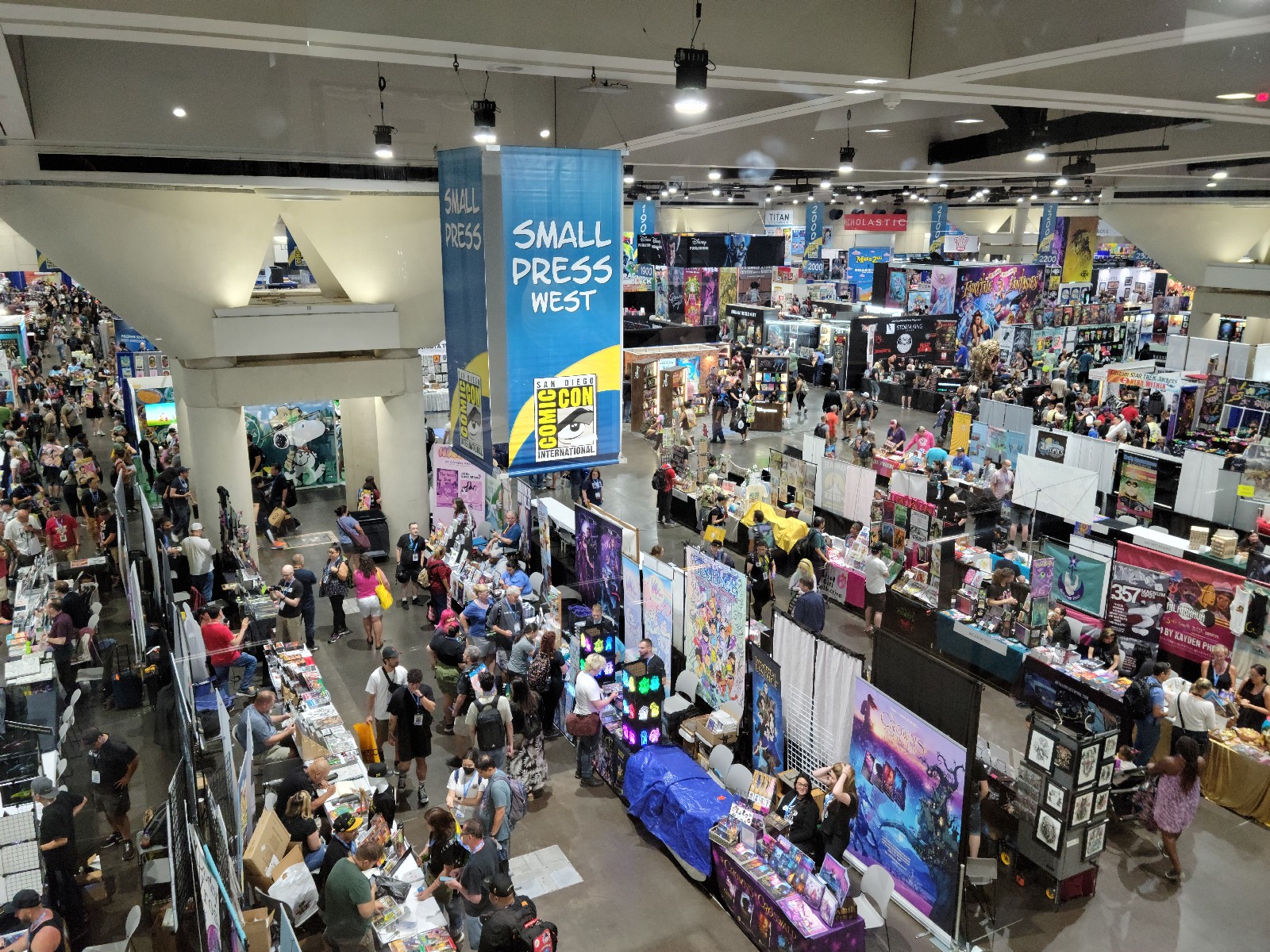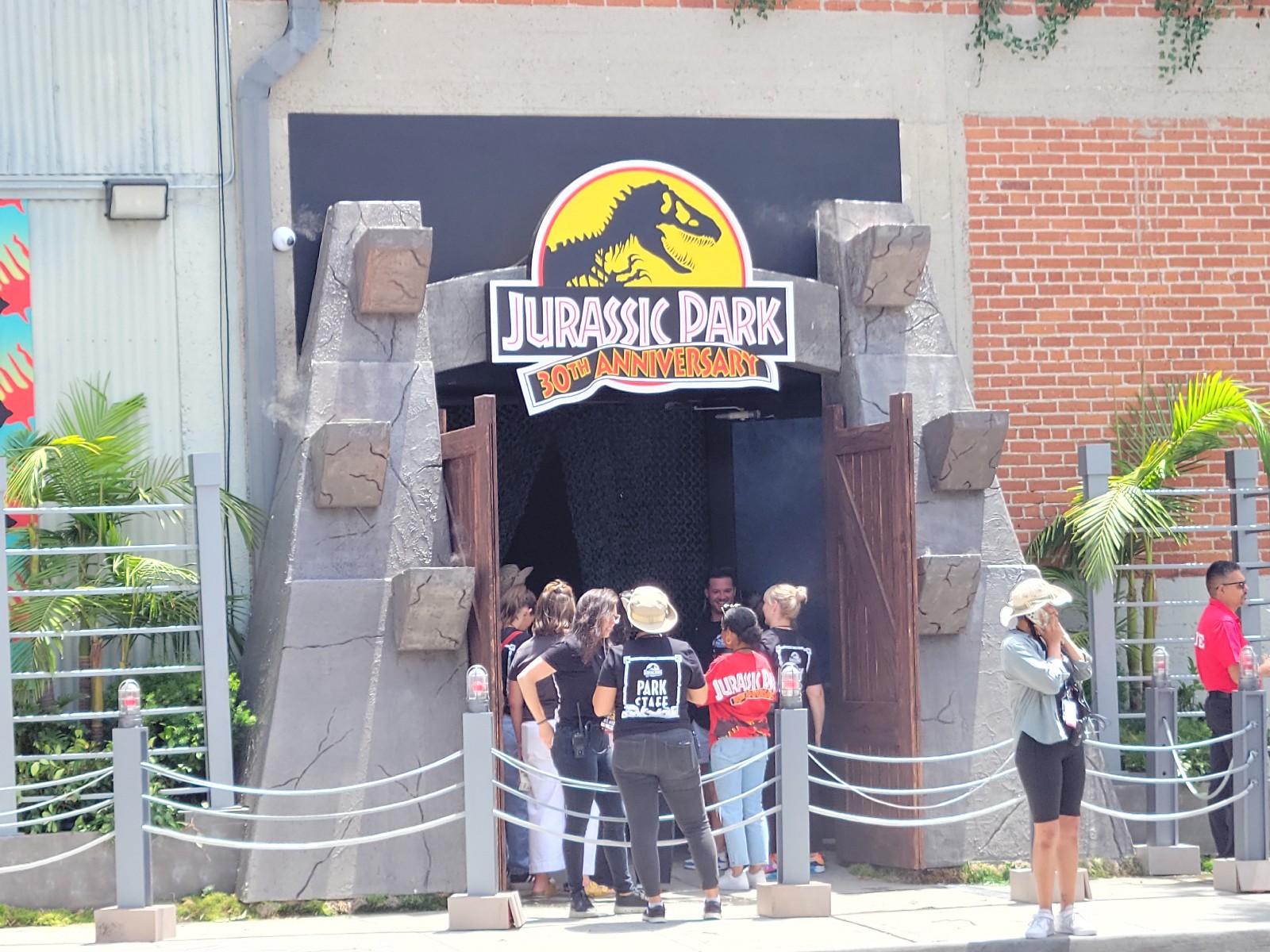After the Steven Moffat panel on Friday evening at the annual Doctor Who convention known as Gallifrey One, Josh and I went out to dinner. Because of the Los Angeles Airport Marriott undergoing remodeling, there was one less restaurant at the hotel than normal that was available to eat at — which meant longer waits. So we decided to take our car and drive to a nearby IHOP.
After dinner, Josh had other plans, so he dropped me off at the hotel and I was left to figure out what to do with myself for the night. I knew that I wanted to attend the Idiot’s Lantern sketch comedy show, but that wasn’t until 10:30pm, so I had a few hours. I saw that there were a couple of episode commentaries with writers and producers, so I decided to go sit in on those, as I had enjoyed the ones I had attended at previous Gallifrey One events.
First up, at 8:00pm, was the episode commentary on The Eaters of Light, which was Episode 10 of Series 10, wherein the Doctor, Bill, and Nardole discover the whereabouts of the Ninth Legion of the Roman army that had mysteriously disappeared. Executive Producer Brian Minchin and writer Rona Munro would be doing the commentary, moderated by Deborah Stanish of the Verity Podcast.
For those unfamiliar with episode commentaries at Gallifrey One, basically what happens is the episode is shown, with the volume turned low, while the panelists sit in comfy couches in front of the screen and make comments about the episode. So that’s why there aren’t any pictures from this.
Prior to writing the episode, Rona had a meeting with Steven Moffat, who told her to think about the audience that would be watching — 8 year old kids. So while writing, she thought about what she would have wanted to see when she was a little girl. The opening scene with the brother and sister are based on Rona and her brother wandering around looking for the Ninth Legion. Rona kept expecting the scene to be cut, scene there was no Peter Capaldi in it, but to her surprise, it was kept in.
Rona commented that one of the explanations for what happened to the Ninth Legion was that it was actually a “clerical error” — that they had referred to themselves as something else — but that’s boring.
Brian talked about how this was a good representation of Scotland and how isolated it is. He recalled that it was freezing there, so they came up with the solution of using a trailer (or “horse box”) to keep people warm.
Although Nardole is a big part of the episode, he wasn’t included in the first draft. In fact, it was many drafts later that Nardole was incorporated into the episode.
Rona told us about a Scottish myth that if you go to sleep in the hills, it was dangerous, because you might end up inside and have to dance, and then when you emerge, it’s centuries later. She confessed that she ripped all that off for the episode.
Rona apologized for getting “history nerdy” on everyone, but explained that it is unknown what the culture of people were in this area of Northern Britain at the time, only what they developed into, which were the Pictish people. She also pointed out that there were no carving stones at that time, and that’s why the symbols you see are drawings. Deb Stanish commented that Rona is essentially Bill in this episode — a Ninth Legion fangirl. Rona encouraged everyone to go home and look up an ancient Pictish horn. She also commented that the monster can’t be too scary for kids at tea time.
Continuing her history lesson, Rona informed us about the idea that the entire community of Picts had died in war, and that only kids were left. She pointed out that in this episode, the oldest is 18. She also told us that no one knows what all the symbols on the stones mean, so she picked a symbol and made up a meaning for it that ties into the story. For the mirror symbol, she made it be a weapon that channels light for the monster that eats light.
Rona recalled that when she had written Ace and Kara in her Classic Doctor Who episode, she had to smuggle in the lesbian subtext, and didn’t tell anyone. However, with this episode, she realized she could openly include it, rather than have to smuggle it in, and in fact was encouraged to do so.
As the episode wrapped up, Rona commented that it was nice to see the care that had been taken with the historical accuracy with the little bit that is known.
As for the Missy scene at the end, Steven Moffat wrote that scene, not Rona. However, Rona said she was thrilled that she got to have Missy in her episode, because she’s one of her favorite characters.
Rona made sure to point out that the symbols on the stones that had been paintings before were now carvings, since it was now centuries later.
Next up was the episode commentary on Thin Ice. Stay tuned for our recap!












